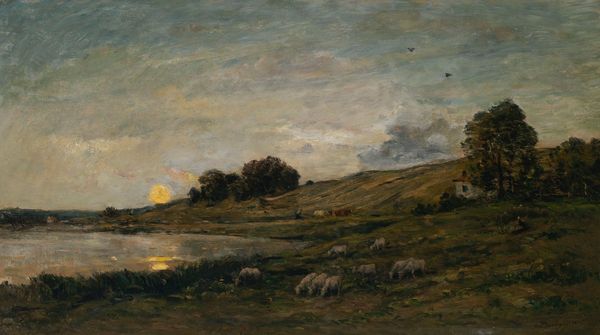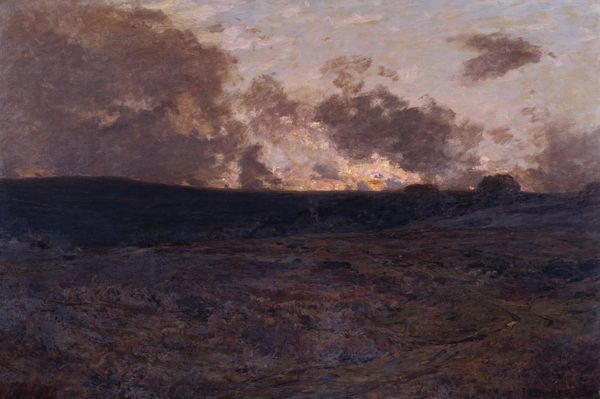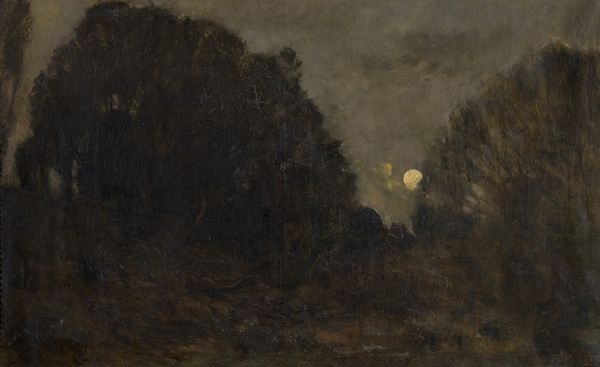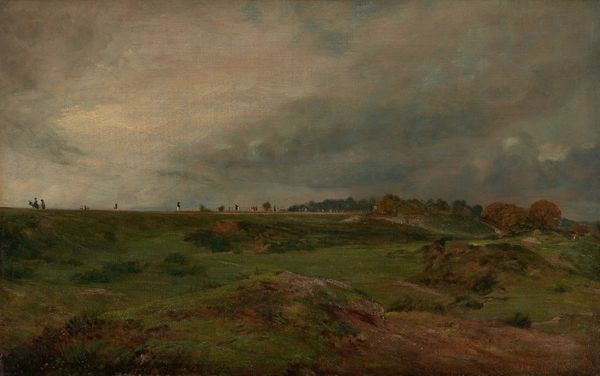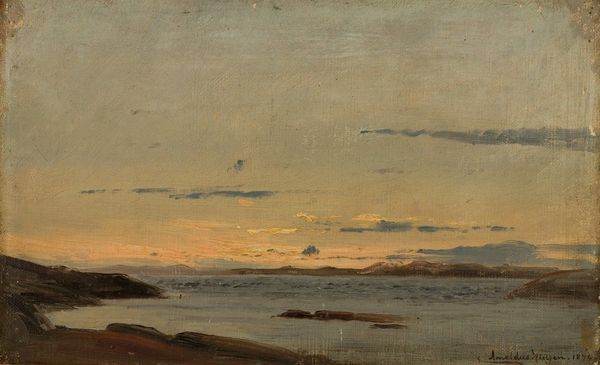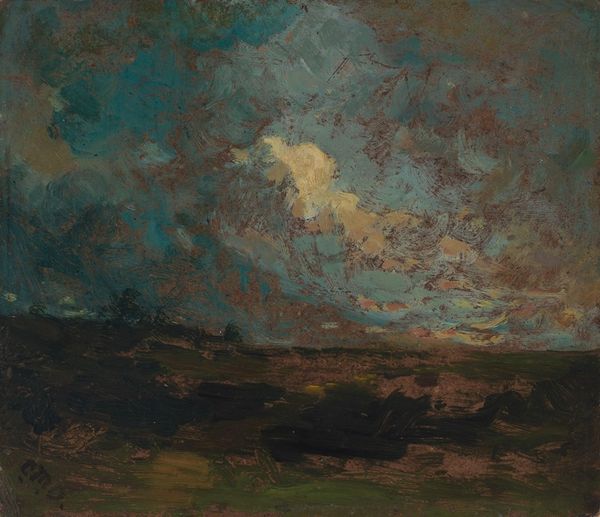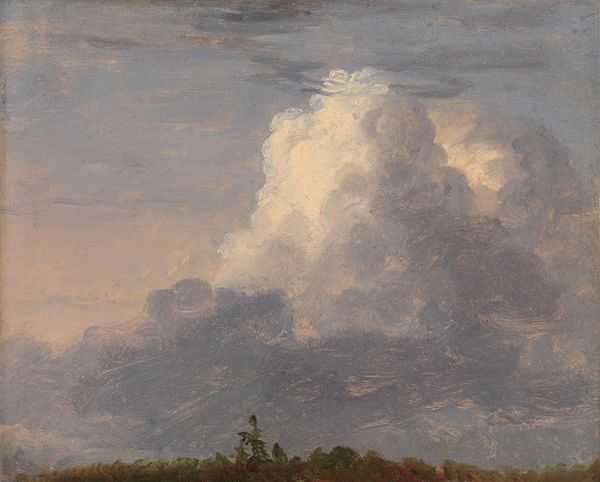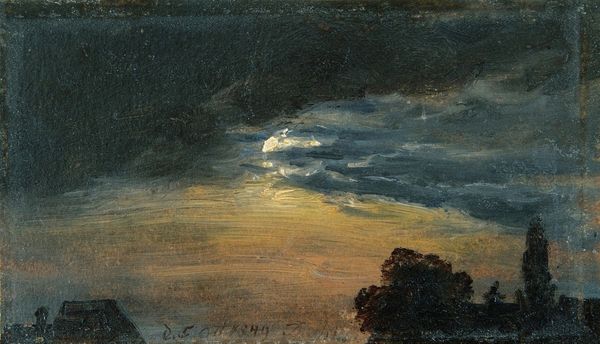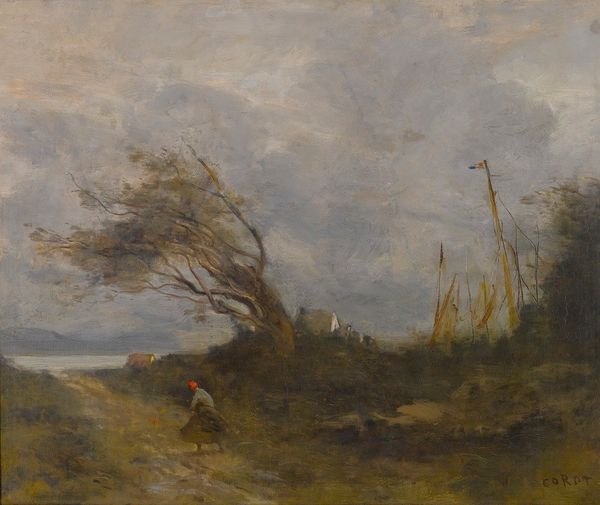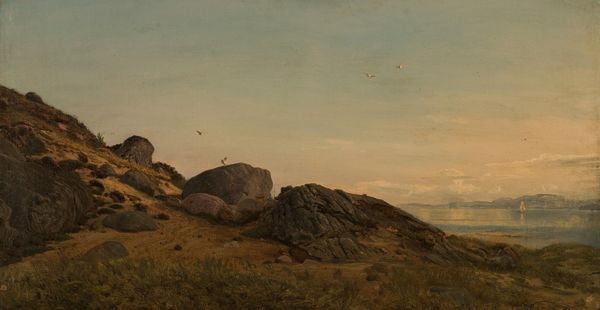
Copyright: Public Domain: Artvee
Curator: Let's turn our attention to "Stemning, Jæren," a landscape painting created in 1894 by Amaldus Nielsen. It’s an oil on canvas, capturing a coastal scene. What are your initial thoughts? Editor: Immediately, the muted palette strikes me—almost monochromatic. A sense of melancholy, wouldn't you say? And that tiny, diffuse orange shape—sun? Moon? It certainly draws the eye, doesn’t it? It creates a strong focal point against that somber sky. Curator: I'm interested in how Nielsen employs the plein-air technique here. This wasn't just about rendering a scene; it was about engaging with the actual physical labor, facing the coastal elements, documenting atmospheric conditions on site. Did the work conditions affect the finished product and overall art consumption? Editor: That’s interesting but let’s also consider the formal elements, beyond mere reproduction of a location. See how he’s used broad, almost crude brushstrokes. They dissolve form, creating this hazy, dreamlike impression. Curator: Dreamlike maybe but it might be better described as rugged realism: Jæren was known for its harsh landscape and tough agricultural conditions. Nielsen was acutely aware of the social realities. The limited palette reflects both aesthetic choice but probably the socio-economic circumstances too. The color scheme is determined by accessible pigment. Editor: Still, let’s not forget the careful composition. The horizon is deliberately low, emphasizing the vastness of the sky. That single luminescent form is carefully positioned to balance the earth tones of the dunes. Are you going to dismiss the romanticism movement entirely here? Curator: Not dismiss it. It's more complicated. Consider the art market dynamics of the time. Coastal scenes were commercially viable, often depicting idealized notions of rural life. Nielsen navigates this, presenting a raw scene instead. Editor: But doesn’t that raw scene elicit an emotional response, a kind of sublime awe? And what of the texture, the impasto? The paint itself becomes a crucial element, creating visual interest through its physicality. Curator: All made possible via industrial production and affordable cost, giving rise to artistic freedom, even that physical impression! Editor: Well, I find both our points of view enlightening when considering Nielsen's coastal painting. It’s that fascinating balance between formal composition and art process, that helps create an evocative image. Curator: Precisely. Recognizing these competing ideas, we get a fuller picture of not just what the artist painted but *how* and *why.*
Comments
No comments
Be the first to comment and join the conversation on the ultimate creative platform.
